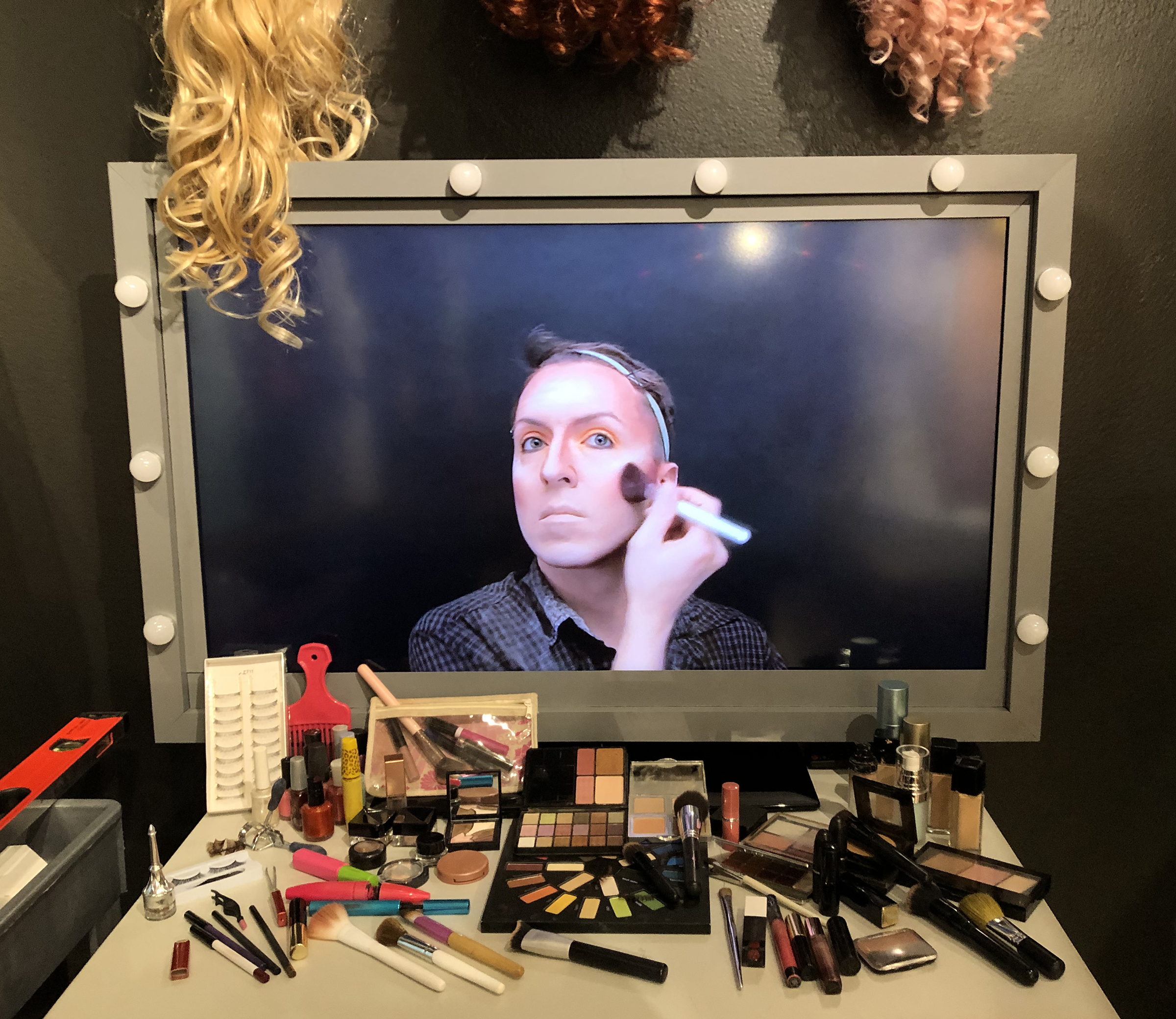A spectacular celebration of the world of drag will kick off this weekend with two events you won’t want to miss. On Saturday at Krannert Center for the Performing Arts is the sought-after and sold-out appearance of Urbana’s own Sasha Velour, RuPaul’s Drag Queen of 2017, in her new show, Smoke & Mirrors. Because interest far outpaced tickets, the performance will be projected live in the lobby of Krannert.
 Image courtesy of Spurlock Museum, University of Illinois at Urbana-Champaign
Image courtesy of Spurlock Museum, University of Illinois at Urbana-Champaign
Even more up close and personal is In Her Closet, the companion show opening at Spurlock Museum on Sunday between 1:30 and 4 p.m. From mere inches away you can take in every detail of the flamboyant and exquisite costumes loaned by nine Central Illinois and farther flung drag queens, including two costumes loaned to the exhibit by Velour herself.
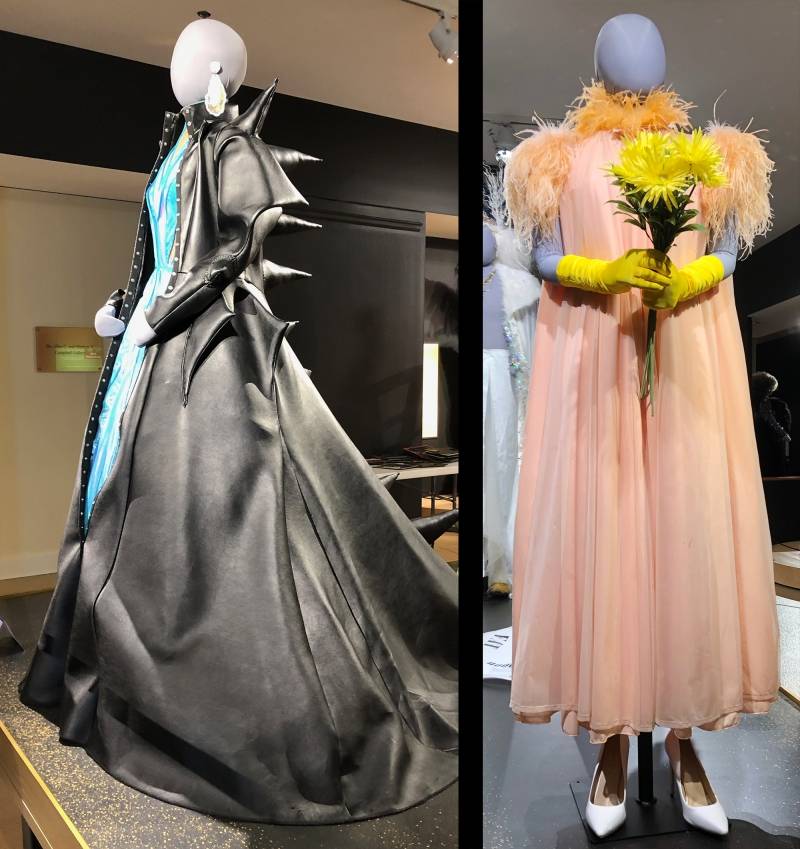
In Her Closet will be up through May, with a year-long schedule of unfolding events, including panel discussions, drag queen storytelling, and a jewelry-making workshop.
This weekend is the coming home for a queen who has hit the heights, and honors her roots. On the right as you enter the exhibit, the gorgeous sequin and fringe dress is the first performance costume of Ceduxion Carrington, who was instrumental in urging Velour to step onto the stage for the first time at our very own C Street.
The traditions of drag include a careful network of mentoring, invaluable to the young Sasha Velour. Momma Ceduxion, involved in drag for over 21 years, has been important to many queens getting their start, and can break up a fight just by showing up. For her, the prime focus is art and acting. A talented cartoonist, she always wanted to be an artist, but was told by her father that the only path for an African-American man was to be a factory worker at Caterpillar. The child kept dreaming, and slowly shaped her own spirit into Ceduxion. At 22, visiting a national drag competition in Dallas, she was tricked by a friend into competing in the sequin dress, costing her $1100 then. She was sure it was the lowest budget in the competition. Her mother raised her to love gospel and country, her father to know blues and jazz, so she has a wide musical tradition to call on. She can make any song uniquely hers, has a knack for choreography, and also plays drums and cello.
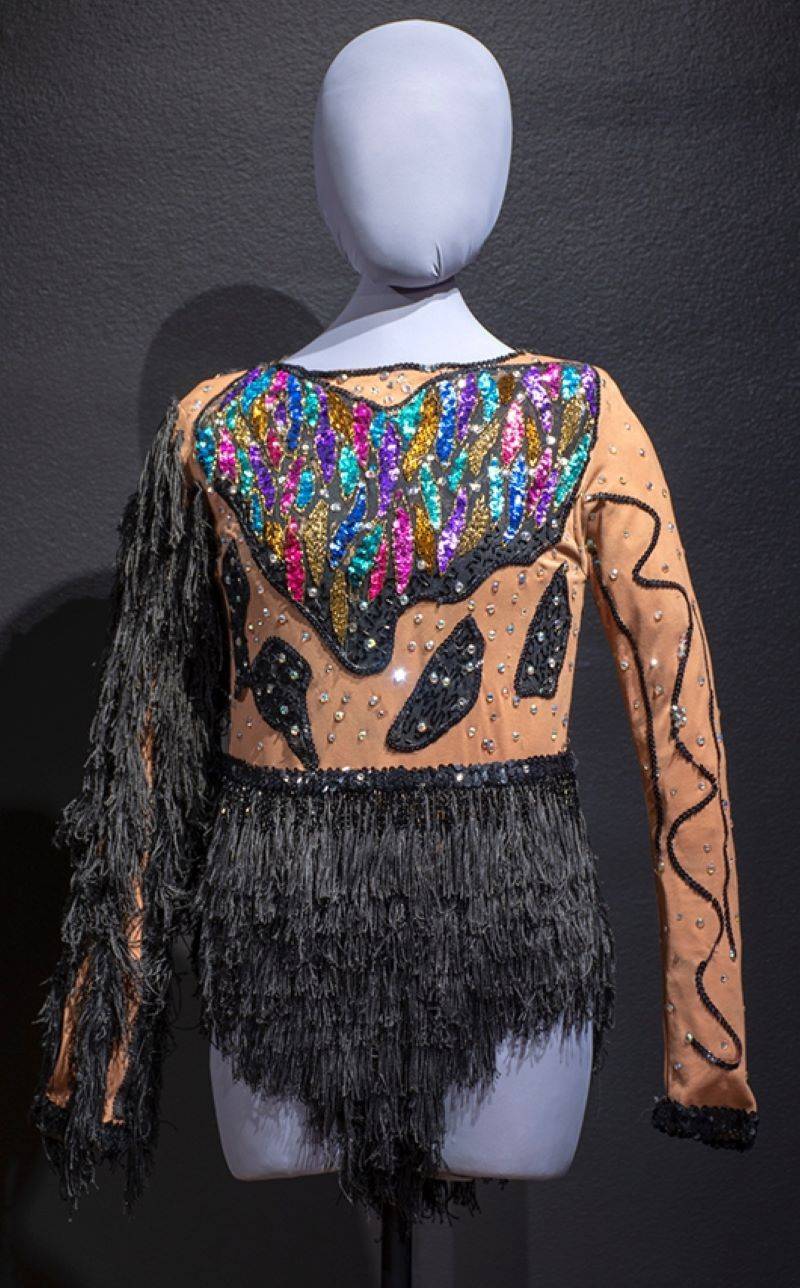 Photo courtesy of Spurlock Museum, University of Illinois at Urbana-Champaign
Photo courtesy of Spurlock Museum, University of Illinois at Urbana-Champaign
The mannequins were created to the measurements of each queen by Larissa Almanza, a third year MFA in costume design and intern at Spurlock, working under staff member Melissa Sotelo, and the elevated runway was constructed by student/staff Vil Song, to raise the queens to their rightful level.
New to drag? This is the perfect time to get acquainted. It’s hard to resist its whimsy, its delight, its political/historical overtones, and its idiosyncratic artistry. And it’s okay to stare.
At its most basic, “drag” is a man dressing as a woman in order to entertain, though women dress as men too. Given its transgressive essence, drag can erupt into superhero and faerie realms. Sasha Velour and her partner Johnny, in the inaugural issue of Vym, now Velour, asked “What is drag?” For Velour: “It’s an artform that mocks and celebrates the idea of gender. It’s gaudy and fun but also very personal and honest.” For participating queen Annie Hart, drag honors its LGBTQ+ past, its traumas, political battles, and triumphs, which this year include the 50th anniversary of the Stonewall Riots in Manhattan. Hart sees drag as one way to engage the community to make change. It is fundamentally a community event, bringing together established queens, newcomers, the uncertain, the curious, and more. Two queens can make a show; a heart-felt performance and expression are more important than the perfection of the costume. Mistakes are flaunted.
Highlighting drag culture may seem unexpected for a campus museum mostly known for displaying cultural artifacts in historic context. Just emerging from a year of strategic planning under Director Elizabeth Sutton, Spurlock is looking forward to branching out as a place where the community can also investigate interesting aspects of modern culture. Sunday afternoon you can experience the perfect segue. With In Her Closet, Sutton is pleased to see Spurlock expanding its role into parts of the community that surely have never walked through its doors before. And indeed, the queens assembled here have much of value to teach us all.
Two years in the making, In Her Closet showcases a fabulous range of fashion, and dives deep into stories of the queens themselves. Each tells her story on display panels, sharing stories such as “the weirdest/strangest/worst place you’ve dressed for a performance” and bloopers of wardrobe malfunctions. For Sharon ShareAlike at a crowning ceremony, her heavy crown slid her wig onto the floor leaving a bald head. Yes, humor and self-deprecation are essential components of drag, as well as the honesty of knowing how they can be slurred, as Mona Monclair expressed powerfully here.
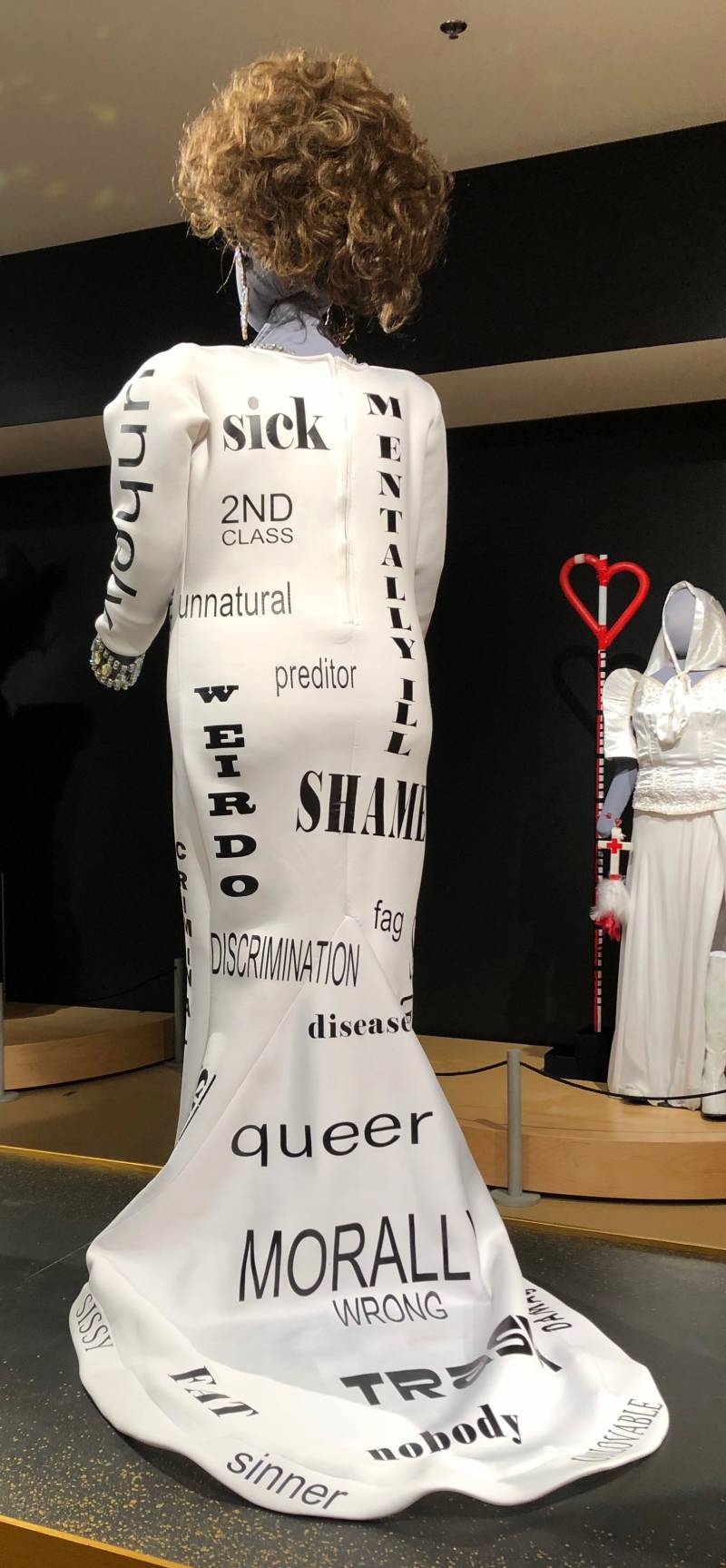
Originally, Department of Theatre faculty Olga Maslova and Katherine Syer proposed that Spurlock mount a show focused on drag costumes and how they’re made. The idea was immediately championed by Christa Leigh Deacy-Quinn, Collections Manager, and Melissa Sotelo, Collections Coordinator, who have worked tirelessly since to make it happen. Sutton, who came on as director just as the idea was introduced, and staff knew it was essential to add both academic expertise and the involvement of the local drag community. They identified co-curators John Musser, at the time working toward a doctorate in English, now on the faculty at the University of Pittsburgh (shown in the opening video screenshot putting on makeup), and Paul Michael L. Atienza, doctoral candidate in Anthropology.
Musser is respected for his in-depth work on the queerness of diva performance and the way that divas shape queer culture. In drag, he transforms to Veronica Bleaus, self-proclaimed “Worst Drag Queen of the Midwest” and much loved figure on campus in recent years. Remember that red military outfit and outrageous makeup at the head of GEO marches? Take in the remarkably dissonant details of the three costumes in the show, prime examples of Bleaus’ “ugly camp” aesthetic.
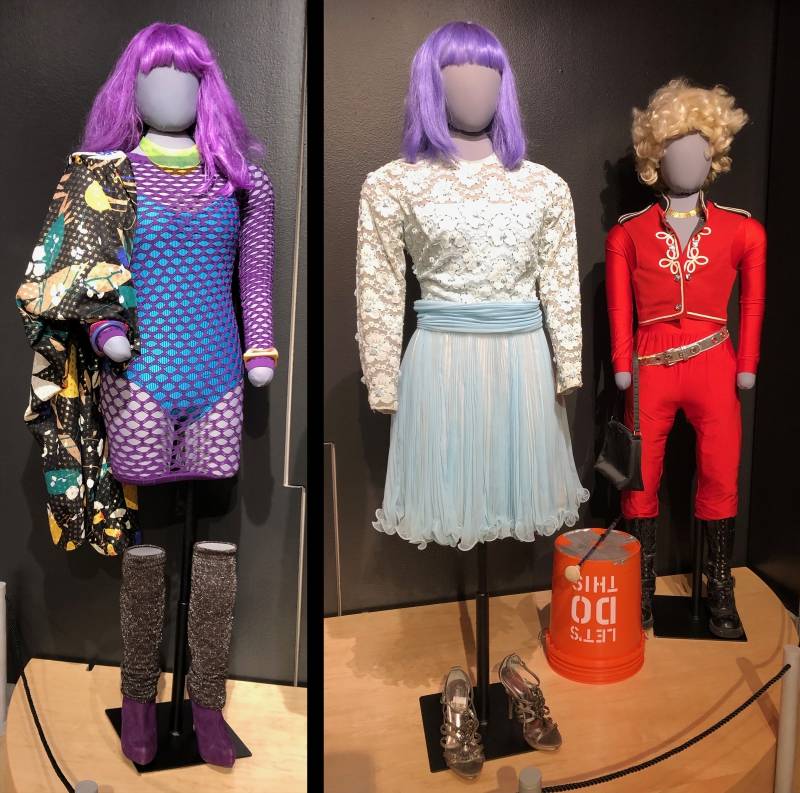 Musser sees drag as a rite of passage for gay men finding their way in and out of the closet and the wider gay world. He hopes visitors to the show will come away with an immersive experience in the details of drag — makeup, undergarments, shoes, wigs — the weird delights on full view. He wants people to be as fascinated and curious as he is. In his own life, drag is a vivid means of self-expression and cultural critique, as well as the intellectual exploration sparked by his own drag practice. Musser is currently preparing to premier a new performance, The Diva Saga: The Legend of the Worst Drag Queen. Let’s be sure it comes to C-U.
Musser sees drag as a rite of passage for gay men finding their way in and out of the closet and the wider gay world. He hopes visitors to the show will come away with an immersive experience in the details of drag — makeup, undergarments, shoes, wigs — the weird delights on full view. He wants people to be as fascinated and curious as he is. In his own life, drag is a vivid means of self-expression and cultural critique, as well as the intellectual exploration sparked by his own drag practice. Musser is currently preparing to premier a new performance, The Diva Saga: The Legend of the Worst Drag Queen. Let’s be sure it comes to C-U.
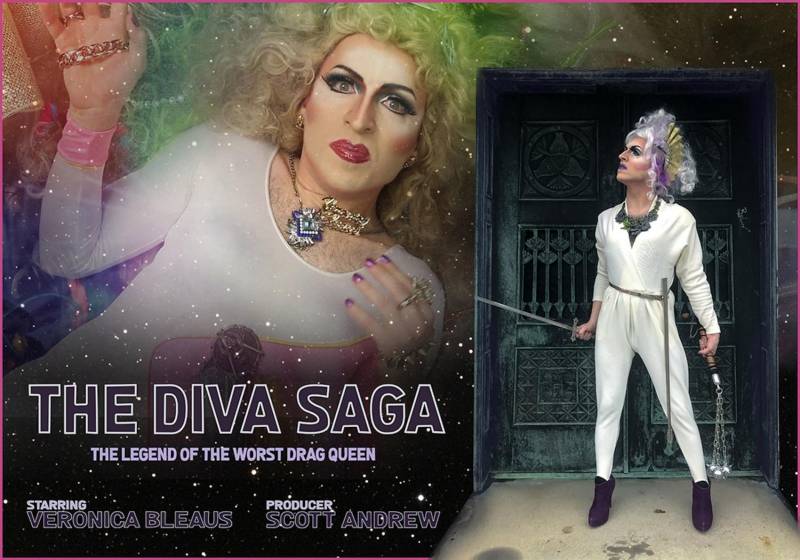 Image by Scott Andrew; by permission of John Musser
Image by Scott Andrew; by permission of John Musser
Co-curator Atienza also brings a dual role to his contributions to In Her Closet. His academic work focuses on the use of digital technology among gay Filipinos, and the meanings of decolonial critique. His performance, under the drag name Maria Arte Susya Purisimo Tolentino, or Ma. Arte, encapsulates the stereotypical roles of Filipina women. He worked with tailor Johnny Dimavivas in his native Philippines to construct the signature costume here.
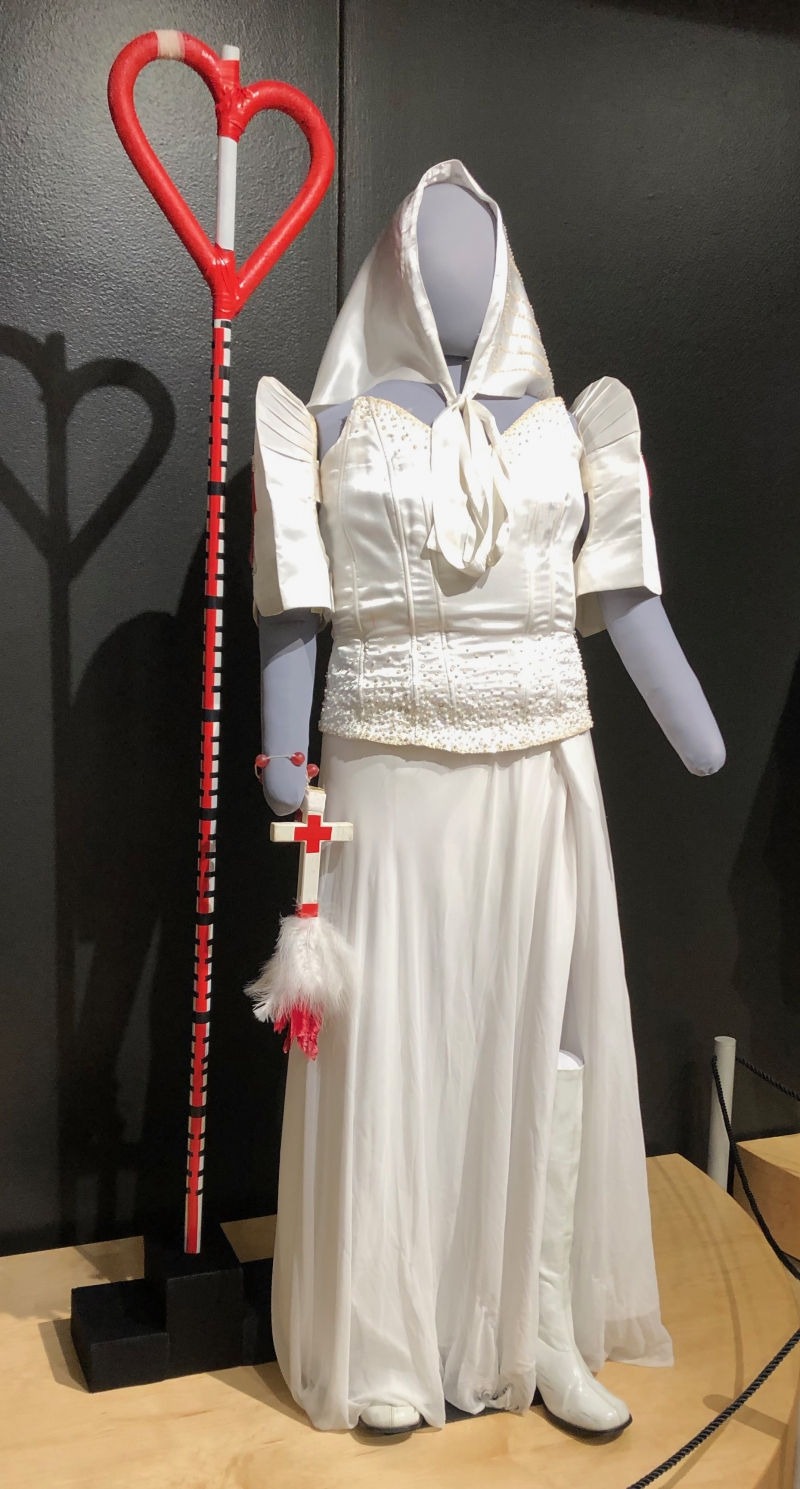
The details unfold, beginning with the white satin image of Catholic purity, its veil embroidered with sequins in the shape of the Philippines. In performance, Ma. Arte flings this off to become an apron, flaunting the “domestic service” women’s role. An oversize thermometer says “nurse”, with its mercury exploding into a heart. Her crucifix doubles as a feather duster, with a string of anal beads, spotlighting the dilemmas of Filipina sexworkers, echoed by the boots.
Atienza acknowledges the privilege he has as a man to perform female roles, where as a lighthearted but transgressive figure, he has freedom to make statements about life for women in the Philippines — roles forced on them during their imperial past — and misogyny. These legacies of colonial history continue to impact women’s roles today.
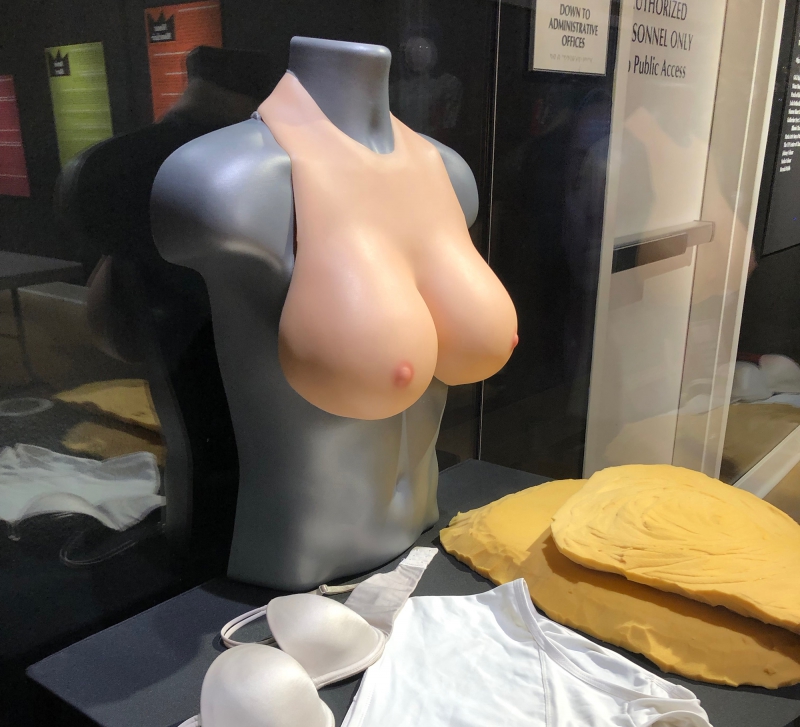
Sharon ShareAlike, from Bloomington-Normal, first devised for her own use a pair of silicone breasts with terrific cleavage. They were envied so widely that she began her own company, BoobsForQueens, making several sizes and four skin tones. They’ve found their fame on RuPaul’s Drag Race and The Ellen Show; here’s a shout out for Illinois ingenuity. Admire ShareAlike’s costume, Monster.

Lola Carrington Rothschild, lender of the long green gown which he calls “Princess and the Frog,” goes by the pronoun “he”, to stand strong as both drag artist and man. He entered the scene at 16, with shows in C-U at C Street and Emerald City and in Chicago. Drag for him is his only real form of personal expression. Basic makeup for him may take two hours, restructuring the male face to reflect a woman’s jawline and features. A more elaborate look can take him up to 3 1/2 hours.
Rothschild confirmed what a number of queens lament — the lack of local community for drag since the closing of C Street. In earlier years of the C-U drag scene, when The Bar and C Street, and then Emerald City were active, it was customary for a network of older queens to guide newcomers into the safety and nurture of people who knew the way. The tradition in drag is for a younger performer to “earn” a drag mother, through attracting an older queen’s interest.
This faltering community is a concern for Nathan Alexander, graduate student in wildlife ecology at the U of I and currently head of The UP Center of Champaign County. He is chief organizer of the 10th annual Pride Fest and Parade, which will endcap September’s events here, setting forth at 3 p.m. September 28th in downtown Champaign. Alexander is networking with Illinois queens to identify a space that can serve as the center of drag community.
His drag name, Annie Hart, follows a tradition in drag of making your first name the name of your first pet, and the last the first street you lived on. In the center of the runway at Spurlock, take a moment to admire Hart’s ice blue towering costume, reaching to a full 6’5” height, with 6 1/2″ platforms. Put a mohawk on top and you get the full impact. The costume emerged when she was living in Oregon, which has a radical faerie tradition that opened her artistry to more fantastic styles. Alexander handstitched this masterpiece in one week during a particularly intense part of his masters program.

The message the queens want you to take home: Support local drag. It’s worth it. Study the details; let your curiosity and fascination out of the box. Listen to the stories, appreciate the political commentary, whether subtle or blatant. Most of all, get into the spirit! And be ready to rock the streets at the tenth annual CU Pride Fest on September 28th.
Photos by Cope Cumpston (taken with permission from Spurlock Museum) except where noted








